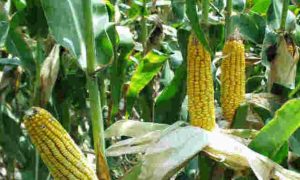Improving transformation frequency in maize

Researchers at the VIB-UGent Center for Plant Systems Biology have achieved a significant breakthrough in maize genetic research by enhancing transformation efficiency using ternary vectors and morphogenic regulators. Published in The Plant Journal, their study addresses the challenge of low transformation frequency in maize, crucial for gene-editing applications like novel genomic techniques (NGTs). By integrating an additional helper plasmid and GRF-GIF chimeras, they increased transformed plant generation up to 20-fold. This advancement aims to develop economically beneficial maize hybrids suited for local farming conditions, advancing agricultural innovation.
Maize is one of the classical model organisms for genetic research. However, the low transformation frequency remains an important bottleneck for many gene-editing applications.
Researchers at the VIB-UGent Center for Plant Systems Biology have made substantial strides in overcoming this bottleneck. By leveraging a combination of ternary vectors and morphogenic regulators, they have significantly boosted transformation efficiency, paving the way for more effective research and innovative applications.
Their research is published in The Plant Journal.
Tackling the transformation bottleneck
Maize (Zea mays L.) is a very important crop globally for agricultural and industrial applications, but also a key model organism in genetic research. Traditionally, gene editing in maize relies on Agrobacterium-mediated transformation. However, a low transformation frequency in this species creates a bottleneck in genetic research, including novel genomic techniques (NGTs)
A research team from the VIB-UGent Center for Plant Systems Biology together with a collaborator at the University of California at Davis in the US, tackled this bottleneck on two fronts. They introduced an additional helper plasmid to Agrobacterium, increasing its ability to transfer DNA to maize cells. Additionally, they used GRF-GIF chimeras, a type of morphogenic regulator, to increase the regeneration of transformed cells into plants. Combining these technologies, the number of transformed plants they could generate improved up to 20-fold.
“Increasing the transformation frequency has been a goal for many research groups worldwide. However, earlier published results are often based on just a one-off experiment. Here, we evaluated our methods over many years, experiments, and operators. This gives us a solid scientific foundation to implement our findings in further research,” says Laurens Pauwels, group leader at the VIB-UGent center for Plant Systems Biology.
Implications for the future
The research was done on a maize inbred line called B104. Although this line is often used in research, it has limited economic benefits for agriculture in Belgium. The inbred line is not well-suited to local growing conditions, and farmers typically use hybrids.
The researchers now aim to transform maize inbred lines. The final goal is to gain knowledge to create new hybrids that are agronomically viable and economically beneficial for local farmers, but are difficult to transform with older methods.
“Our next focus will be on field applications. If we can transform inbred maize lines that are more interesting for farmers, we might be able to create more interesting hybrid plants. This can be the starting point to use NGTs more efficiently in agriculture,” says Wout Vandeputte, first author and Ph.D. student at the VIB-UGent Center for Plant systems Biology.
Source Link : https://phys.org/news/2024-06-frequency-maize.html

















